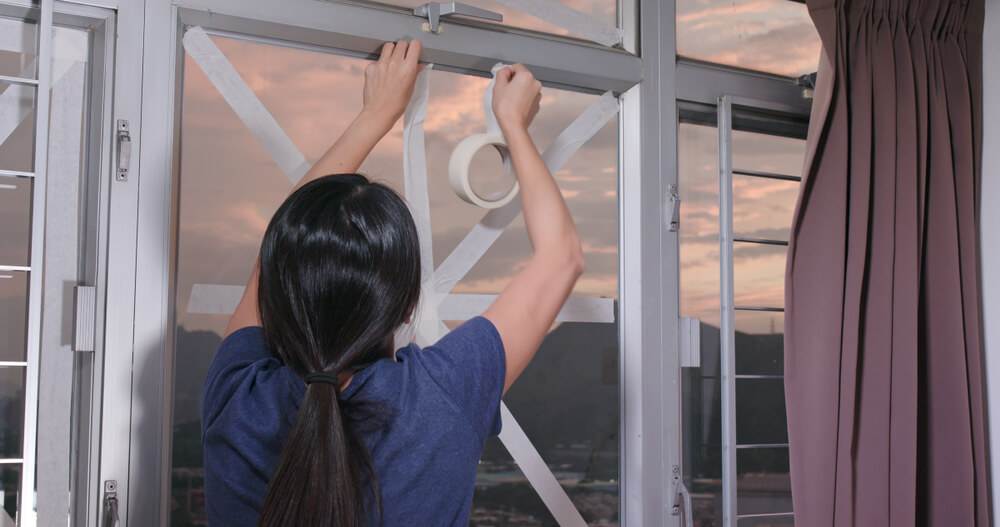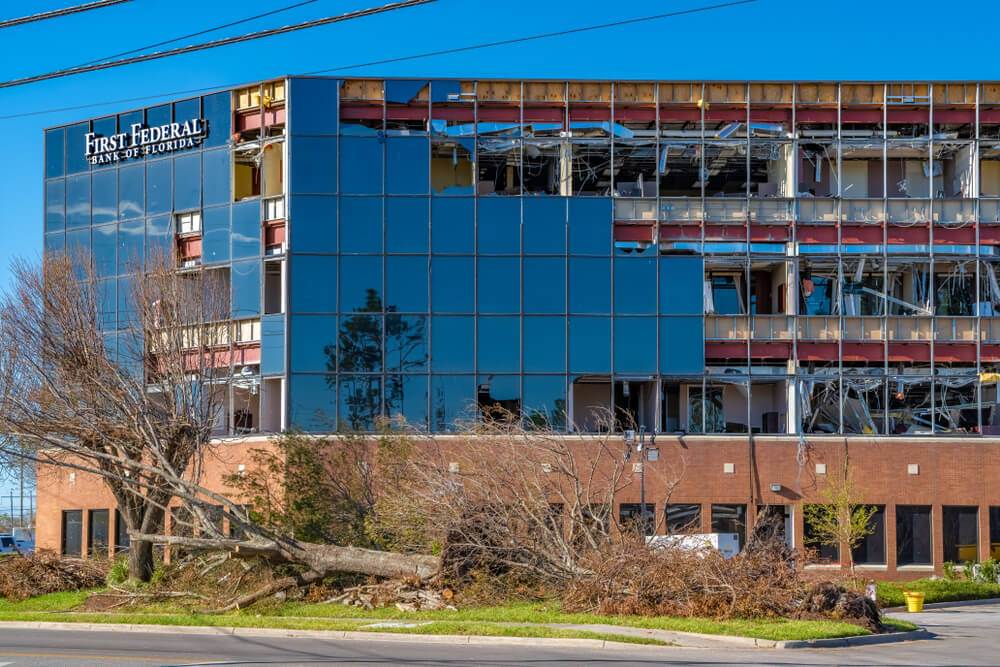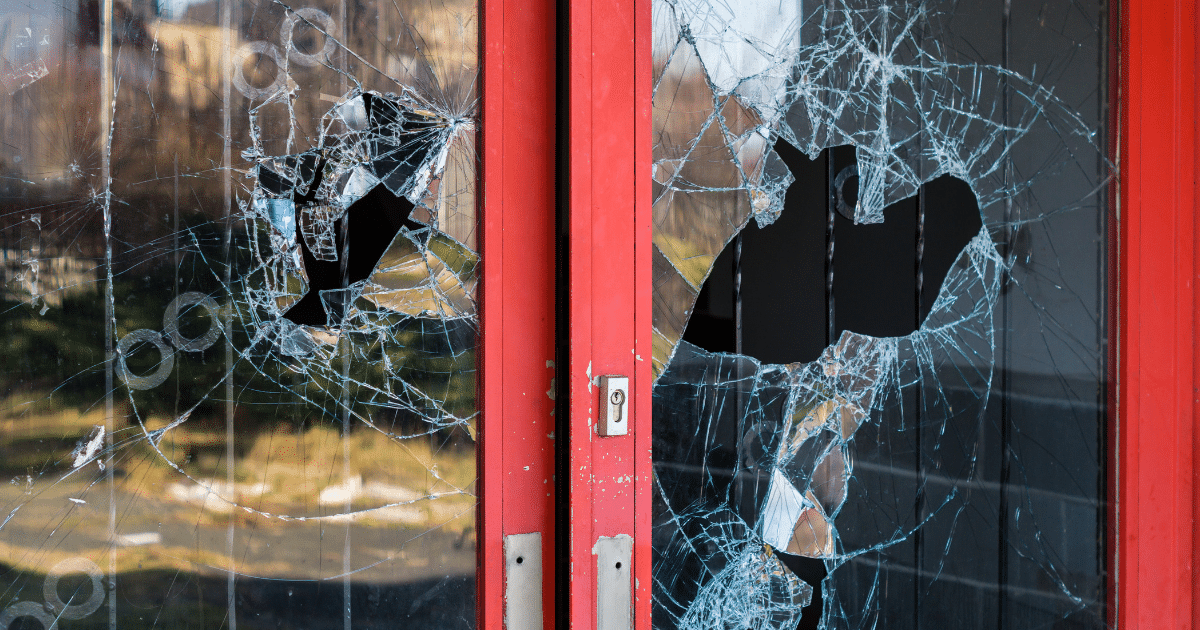So picture this: you’re hunkered down at home, riding out a hurricane, when all of a sudden, a loud CRACK! And before you know it, the window blows out, letting strong winds and rain pour into your sanctuary. Now what? Well, let us give you a few pointers on what to do if you ever find yourself in this rocky situation.
First things first, safety always comes first. So make sure you and your loved ones move away from the broken window and any potential hazard it may have caused. If you have any spare blankets, towels, or even duct tape, try to cover up the opening as best as you can to minimize the amount of water and debris entering your space. And please, resist the urge to stick your hand out or attempt any kind of daring rescue mission to retrieve that precious vase or photo frame. It’s just not worth the risk. Instead, focus on securing your safety and staying calm until help arrives or the storm passes. Remember, storms may blow in, but they eventually blow over.
Immediate Actions
Assess the situation
When a window blows out during a hurricane, it can be a frightening experience. The first immediate action we should take is to assess the situation. We need to determine the extent of the damage and evaluate any potential dangers. Check if there are any flying debris or broken glass that could pose a threat. Assessing the situation will help us prioritize our actions and ensure that everyone stays safe.
Protect yourself
The safety of ourselves and our loved ones should always be our top priority. After assessing the situation, the next immediate action is to protect ourselves. If there is broken glass or debris, we should quickly move away from the area to avoid any injuries. It is essential to find a safe space within the building where we can wait out the storm and avoid further harm.
Secure the area
Once we have protected ourselves, it is crucial to secure the area to prevent any additional damage or injuries. If possible, close off the room or area where the window blew out to minimize the impact of wind and rain. If there is a significant opening, we can use furniture or other heavy objects to block or cover the opening temporarily. Taking this step will help protect the interior of our home and reduce the risk of further damage.
Emergency Repairs
Cover the opening
Covering the opening left by the blown-out window is a key emergency repair to prevent further damage from wind and rain. If there are no immediate materials available, we can use thick blankets or even plastic trash bags to cover the opening. This temporary solution will help keep the elements out until a more permanent repair can be made.
Use plastic sheeting
Plastic sheeting is an excellent temporary solution for covering the opening created by a blown-out window. It is readily available and can be found at most hardware stores. Measure the opening and cut the plastic sheeting to fit, ensuring there is enough material to overlap the edges of the window frame. Secure the plastic sheeting with duct tape, making sure it is tightly sealed to prevent any water or wind from entering.
Secure with duct tape
Duct tape is a versatile tool that can be used to secure the plastic sheeting or temporary patching materials in place. It is essential to use a generous amount of duct tape to ensure a strong and tight seal. Apply the tape firmly around the edges of the plastic sheeting, pressing it down to create a watertight barrier. This will help keep the interior of our home protected from any further damage caused by the storm.

This image is property of oceanimpactwindows.com.
Contacting Professionals
Call emergency services
After taking immediate actions to protect ourselves and secure the area, it is crucial to contact emergency services. If there is a blown-out window during a hurricane, it may indicate severe weather conditions and potential dangers in the area. Informing the appropriate authorities will ensure that they are aware of the situation and can provide any necessary assistance.
Contact your insurance company
Once everyone’s safety is ensured, it’s important to contact our insurance company as soon as possible. They will guide us through the claims process and provide guidance on what steps to take next. Be prepared to provide them with detailed information about the damage and any documents they may require. Taking prompt action will help us initiate the insurance claim process and expedite the repair or replacement of the blown-out window.
Seek help from a contractor
Contacting a contractor who specializes in window repair or replacement is essential to ensure the window is fixed correctly and that it meets safety standards. They will be able to assess the damage, recommend the best course of action, and provide an estimate for the repairs. Hiring a professional will give us peace of mind knowing that the window will be restored properly, helping protect our home from future storms.
Temporary Solutions
Install a temporary patch
A temporary patch can provide a quick solution to seal the opening left by a blown-out window. Use materials like plywood or thick boards, cut to fit the opening, and secure them in place with screws or nails. This will create a barrier against the elements until a permanent repair or replacement can be made. Remember to weatherproof the patch by applying a waterproof sealant or paint to prevent water damage.
Board up the opening
boarding up the opening left by a blown-out window is another effective temporary solution. Measure the opening and cut pieces of plywood to fit. Secure the boards in place using screws or nails, ensuring they overlap the edges of the window frame. Boarding up the opening will provide added protection against the wind and rain, keeping our home secure until a replacement window can be installed.
Use tarps for protection
Tarps can be a versatile and easily accessible option for protecting our home after a window has blown out during a hurricane. Cover the opening with a tarp, ensuring it is secured tightly to prevent wind or rain from entering. Use bungee cords or durable ropes to tie down the tarp, making sure it is firmly anchored. This quick solution can help keep our home dry and protected until a professional can repair or replace the window.

This image is property of thumbor.forbes.com.
Preventive Measures
Install impact-resistant windows
To mitigate the risk of a blown-out window during a hurricane, consider installing impact-resistant windows. These windows are designed to withstand high winds and flying debris, reducing the chances of window failure. Impact-resistant windows use multiple layers of glass and a durable interlayer to provide added strength and protection. While they may require a larger upfront investment, they can offer long-term peace of mind and potentially lower insurance premiums.
Secure windows with hurricane shutters
An alternative to impact-resistant windows is installing hurricane shutters. These shutters provide an extra layer of protection for windows during severe weather. They can be made of durable materials such as metal or impact-resistant polycarbonate. Hurricane shutters can be deployed when a storm is approaching and provide an additional barrier against wind and debris. They are an excellent investment to ensure the safety and integrity of our windows during hurricane season.
Reinforce window frames
Reinforcing window frames is an additional measure that can help prevent window failure during a hurricane. Secure the window frames with metal brackets or hurricane straps, adding an extra layer of support to withstand the strong forces of high winds. Reinforcing window frames can help minimize the risk of window blowouts, protecting our home and belongings from potential damage caused by severe weather.
Considerations for High-rise Buildings
Stay away from windows
In high-rise buildings, it is crucial to avoid windows during a hurricane. The strong winds at higher elevations can pose a significant danger, causing broken glass or even complete window failure. Find shelter towards the center of the building, away from windows, to minimize the risk of injury. Follow any building protocols or instructions from management to ensure the safety of all occupants during severe weather events.
Follow building protocols
High-rise buildings often have specific protocols and guidelines in place for dealing with hurricanes and other severe weather events. Familiarize yourself with these protocols and follow them accordingly. They may include instructions on how to secure windows, where to seek shelter, and who to contact in case of emergencies. Adhering to these protocols will help ensure the safety of all occupants and minimize potential damage to the building.
Contact building management
If a window blows out in a high-rise building during a hurricane, it is essential to contact the building management as soon as possible. Inform them of the situation and follow their instructions on what actions to take. They may have designated professionals or contractors who can address the issue promptly and efficiently. Contacting the building management ensures that the proper authorities are aware and can assist in resolving the situation promptly.

This image is property of www.aspwindows.com.
Safety Precautions
Wear protective gear
When dealing with a blown-out window during a hurricane, it is essential to prioritize personal safety. Before attempting any repairs or temporary solutions, ensure you are wearing appropriate protective gear. Wear thick gloves, safety goggles, and sturdy footwear to protect against broken glass or other potential hazards. Taking these precautions will help prevent injuries and ensure our well-being while addressing the damage caused by the blown-out window.
Beware of broken glass
A window blowing out during a hurricane can result in shattered glass scattered around the affected area. It is crucial to be cautious and avoid stepping on broken glass to prevent injuries. Clean up broken glass carefully, using gloves and a broom or other suitable tools. Dispose of the glass safely in a puncture-resistant bag to prevent any further accidents. Being mindful of broken glass will contribute to maintaining a safe environment after a window has blown out.
Avoid electrical hazards
Water and electricity do not mix, so it is essential to avoid any electrical hazards that may arise after a window has blown out during a hurricane. If water has entered the area, be cautious of any exposed electrical outlets, wires, or appliances. Do not touch any electrical equipment while standing in water or if you are not sure it is safe. If in doubt, contact a professional electrician to assess and address any potential electrical hazards.
Insurance Claims Process
Document the damage
Before making any repairs or replacing the window, thoroughly document the damage caused by the blown-out window. Take photos or videos from multiple angles to show the extent of the damage. This documentation will be valuable when filing an insurance claim and will help ensure that you receive proper compensation for the repairs or replacement. Make detailed notes about the date, time, and circumstances of the window failure and any other relevant information.
Submit a claim report
Contact your insurance company as soon as possible and provide them with all the necessary information about the blown-out window. They will guide you through the claims process and provide you with specific instructions on what documentation they require. Submit the claim report promptly, ensuring you provide all the requested information accurately. The insurance company will assess your claim and provide guidance on next steps.
Get estimates for repairs
To facilitate the insurance claim process, contact a reputable contractor and obtain estimates for the repairs or replacement of the blown-out window. Provide the insurance company with these estimates to assist them in determining the appropriate coverage for the damage. Engaging a professional contractor will ensure that the repairs or replacement are done correctly, giving you confidence in the quality of the work and helping expedite the insurance claim process.

This image is property of www.impactwindowsndoors.com.
Recovery and Cleanup
Remove debris
After the blown-out window has been repaired or replaced, it is essential to clean up any debris left behind by the hurricane. Remove broken glass, damaged materials, or any other items that may have been displaced during the storm. Dispose of the debris properly following local regulations and guidelines. This cleanup process will contribute to a safe and clean environment as we move forward with recovery and restore normalcy to our home.
Dry and ventilate the area
If any water has entered the area through the blown-out window, it is crucial to dry and ventilate the space properly. Use fans, dehumidifiers, or open windows to facilitate the drying process. This step is essential to prevent the growth of mold or mildew, which can be harmful to both the building and our health. Ensuring proper ventilation and moisture control will contribute to a speedy and effective recovery from the damage caused by the blown-out window.
Repair or replace the window
Once all the necessary steps have been taken to ensure safety, assess the damage, contact professionals, and document the situation, it’s time to proceed with the repair or replacement of the window. Whether it is a DIY project or involves hiring a professional, focus on finding a solution that meets your needs and budget. Consider energy-efficient window options that can provide long-term benefits, such as lower energy costs and increased comfort within your home.
Window Replacement
Consider professional installation
While DIY window installation may be an option for some, it is often best to consider professional installation when replacing a blown-out window. Window replacement can be a complex task that requires specialized skills and knowledge. Professionals are experienced in handling the intricacies involved in window replacement, ensuring proper measurements, weatherproofing, and installation. Hiring a professional will help avoid potential mistakes and guarantee that the replacement window is installed correctly.
Research window options
Before selecting a replacement window, take the time to research different window options available on the market. Consider factors such as energy efficiency, durability, and aesthetic preferences. Explore the benefits of various materials, such as vinyl, wood, or fiberglass, and determine which best suits your needs and budget. Researching window options will allow you to make an informed decision and select a replacement window that meets your requirements.
Select energy-efficient models
When replacing a blown-out window, it is an excellent opportunity to upgrade to energy-efficient models. Look for windows with ENERGY STAR certification, as they are designed to meet strict energy efficiency guidelines. Energy-efficient windows can help reduce energy consumption, lower utility bills, and contribute to a more comfortable indoor environment. Consider features like double or triple-pane glass, low-emissivity coatings, and gas-filled chambers for improved insulation and overall efficiency.
In conclusion, experiencing a blown-out window during a hurricane can be a frightening and challenging situation. However, by taking immediate actions to assess the situation, protect ourselves, and secure the area, we can minimize further damage and ensure our safety. Contacting professionals, implementing temporary solutions, and considering preventive measures will contribute to a swift recovery and provide long-term protection against future storms. By following proper safety precautions, understanding the insurance claims process, and taking steps for recovery and cleanup, we can restore our home and replace the blown-out window with confidence. Consider the numerous options available for window replacement, focusing on professional installation and selecting energy-efficient models to promote a safe, comfortable, and resilient living environment.

This image is property of oceanimpactwindows.com.
